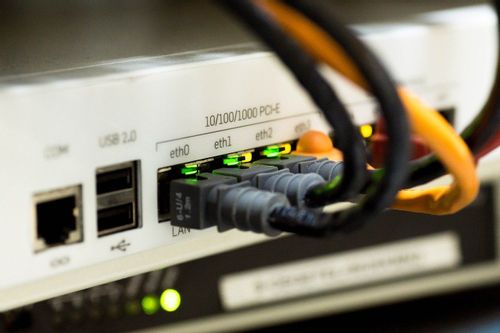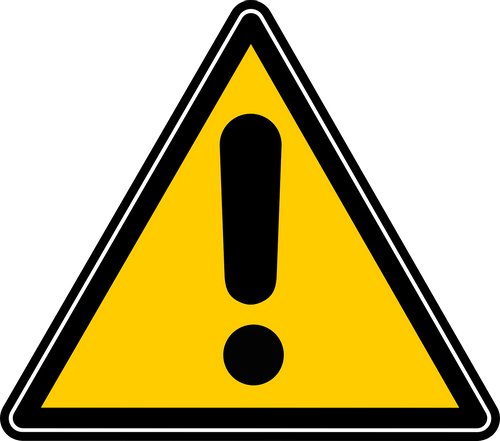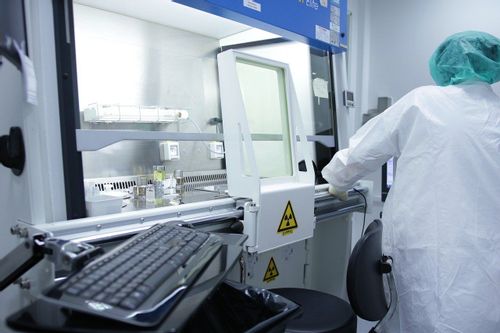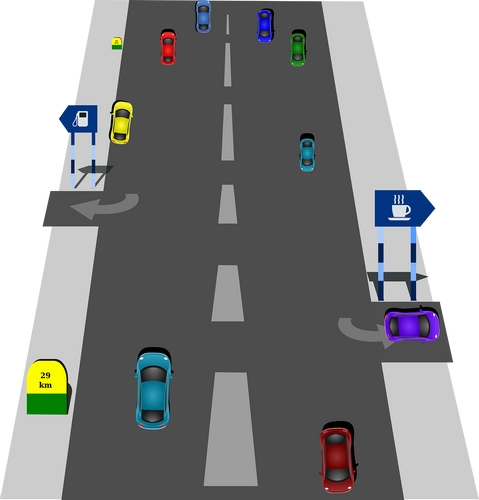Standards Packages
iTeh together with SIST has developed and compiled a comprehensive collection of standard packages to support your standard requirements. Our packages cover an array of content that includes quality management, risk management, road vehicles, machine safety, and much more. With over 200 packages to choose from, you are sure to find a collection to suit your standard needs.
Latest Standards
This document describes a procedure for static strength assessment of rail vehicle structures that are manufactured, operated and maintained according to standards valid for rail system applications.
The assessment procedure is restricted to ferrous materials and aluminium.
This document does not define design load cases.
This document is not applicable for corrosive conditions or elevated temperature operation in the creep range.
This document is applicable to all kinds of rail vehicles.
- Standard24 pagesEnglish languagesale 10% offe-Library read for1 day
- Draft26 pagesEnglish languagesale 10% offe-Library read for1 day
This document describes the basic terms and definitions as well as general procedures for strength assessment of rail vehicle structures that are manufactured, operated and maintained according to standards valid for rail system applications.
The assessment procedure is restricted to ferrous materials and aluminium.
This document does not define design load cases.
This document is not applicable for corrosive conditions or elevated temperature operation in the creep range.
This document is applicable to all kinds of rail vehicles.
- Standard34 pagesEnglish languagesale 10% offe-Library read for1 day
- Draft32 pagesEnglish languagesale 10% offe-Library read for1 day
Full revision of currently published 2014 version. Additionally, expand scope to include plume evacuation systems for endoscopic procedures (e.g. minimally invasive, laparoscopic).
The scope is now the following:
This Standard specifies requirements and guidelines for the design, manufacture, installation, function, performance, maintenance, servicing, documentation, testing, and commissioning of equipment for evacuation of plume generated by medical devices. It is applicable to:
a) portable and mobile plume evacuation systems,
b) local stationary plume evacuation systems,
c) dedicated central pipeline systems for plume evacuation systems, and
d) plume evacuation systems integrated into other equipment (e.g. laser equipment).
- Standard45 pagesEnglish languagesale 10% offe-Library read for1 day
- Draft48 pagesEnglish languagesale 10% offe-Library read for1 day
This document establishes requirements, test procedures, assessment methods and acceptance criteria for operating rolling stock in open track. For pressure variations and slipstream effects beside the track, requirements and assessment methods are provided. For running resistance, assessment methods are addressed in this document. Load cases on infrastructure components due to train-induced pressure variations and slipstream effects are addressed in this document. For ballasted track test set-ups for ballast projection assessment are proposed.
The requirements only apply to rolling stock of the heavy rail system with maximum train speeds above 160 km/h and not to other rail systems. The document is applicable to all rolling stock and infrastructure in open air with nominal track gauges of 1 435 mm to 1 668 mm inclusive.
- Standard60 pagesEnglish languagesale 10% offe-Library read for1 day
- Draft58 pagesEnglish languagesale 10% offe-Library read for1 day
This document specifies requirements for resistance spot welding in the fabrication of assemblies ofuncoated, and metallic coated or weldable non-metallic coated low carbon steel, comprising two orthree sheets of metal, where the maximum single sheet thickness of components to be welded is withinthe range 0,4 mm to 3 mm.
This document is applicable to welding of sheets of the same or dissimilar thickness, where the thickness ratio is less than or equal to 3:1. It applies to the welding of three thicknesses, where the total thickness is less than or equal to 9 mm. Welding with the following types of equipment is within the scope of this document:
a) pedestal welding equipment;
b) welding guns;
c) automatic welding equipment where the components are fed by robots or automatic feeding equipment;
d) multi welders;
e) robotic welders.
Information on appropriate welding equipment is given in Annex A, and information on spot welding conditions is given in Annex B. This information is provided for guidance only.Depending on the service conditions of the fabrication, the type of welding equipment, the characteristics of the secondary circuit, the electrode material, and the shape, it is possible that certain modifications are necessary. In such cases, further information can be obtained from the relevant application standard, where one exists.
- Standard22 pagesEnglish languagesale 10% offe-Library read for1 day
- Draft20 pagesEnglish languagesale 10% offe-Library read for1 day
ISO 18134-2:2017 describes the method of determining the total moisture content of a test sample of solid biofuels by drying in an oven and is used when the highest precision is not needed, e.g. for routine production control on site. The method described in ISO 18134 (all parts) is applicable to all solid biofuels. The moisture content of solid biofuels (as received) is always reported based on the total mass of the test sample (wet basis).
- Standard12 pagesEnglish languagesale 10% offe-Library read for1 day
- Draft9 pagesEnglish languagesale 10% offe-Library read for1 day
Contains requirements concerning basic safety and essential performance that are generally applicable to medical electrical equipment. For certain types of medical electrical equipment, these requirements are either supplemented or modified by the special requirements of a collateral or particular standard. Where particular standards exist, this standard should not be used alone. The contents of the corrigenda of December 2006, of July 2007, the interpretation sheet 1 of April 2008, the interpretation sheet 2 of January 2009 and the interpretation sheet 2 of May 2013 have been included in this copy.
- Amendment48 pagesEnglish languagesale 10% offe-Library read for1 day
ISO 5832-7:2016 specifies the characteristics of, and corresponding test methods for, forgeable and cold-formed cobalt-chromium-nickel-molybdenum-iron alloy for use in the manufacture of surgical implants.
- Standard11 pagesEnglish languagesale 10% offe-Library read for1 day
- Draft8 pagesEnglish languagesale 10% offe-Library read for1 day
This document specifies requirements for disposable extracorporeal blood and fluid circuits and accessories used in combination with haemodialysis equipment intended for extracorporeal blood treatment therapies such as, but not limited to, haemodialysis, haemodiafiltration, haemofiltration.
This document does not apply to:
— haemodialysers, haemodiafilters or haemofilters;
— plasmafilters;
— haemoperfusion devices;
— vascular access devices.
NOTE 1 Requirements for haemodialysers, haemodiafilters, haemofilters and haemoconcentrators are specified in ISO 8637-1.
NOTE 2 Requirements for plasmafilters are specified in ISO 8637-3.
- Standard36 pagesEnglish languagesale 10% offe-Library read for1 day
- Draft32 pagesEnglish languagesale 10% offe-Library read for1 day
- Standard9 pagesEnglish languagesale 15% off
- Draft9 pagesEnglish languagesale 15% off
- Draft9 pagesEnglish languagesale 15% off
This document gives a method for determining the resistance to cracking of steel pipes in sour service. This test method employs a full-scale test specimen consisting of a short length of pipe (a ‘full ring’), sealed at each end to contain the sour test environment within. The test method applies to any pipe; seamless, longitudinally welded (with or without filler), helical welded, and to girth welds between pipes. NOTE 1 The specimen is usually a pipe but can also consist of flange neck or section of a bend, or other tubular component or a combination of the above. NOTE 2 This test method can also be used for corrosion resistant alloys (CRAs). The method utilizes ovalization by mechanical loading to produce a circumferential stress, equal to the target hoop stress, at two diametrically opposite locations on the inside surface of the test specimen. The test specimen is then subjected to single sided exposure to the sour test environment. NOTE 3 The test also allows measurement of hydrogen permeation rates.
- Standard52 pagesEnglish languagesale 15% off
- Standard54 pagesFrench languagesale 15% off
- Draft53 pagesEnglish languagesale 15% off
- Draft53 pagesEnglish languagesale 15% off
IEC 60966-2-1:2024 is a sectional specification that relates to flexible RF coaxial cable assemblies operating in the transverse electromagnetic mode (TEM). It establishes uniform requirements for testing the electrical, mechanical and climatic properties of flexible cable assemblies composed of flexible RF coaxial cables and RF coaxial connectors. This part of IEC 60966 applies to flexible cable assemblies composed of flexible RF coaxial cables and coaxial connectors. Flexible RF cable assemblies are widely used in mobile communication systems, microwave test equipment, radar, aerospace and other fields. NOTE 1 For the purposes of this sectional specification, a cable assembly is always regarded as an integral unit. All specifications apply to the finished assembly and not to individual and non-assembled parts thereof. NOTE 2 This sectional specification can be supplemented with detail specifications giving additional details as required by the particular application. This application will not necessarily require all tests.
- Draft23 pagesEnglish languagesale 10% offe-Library read for1 day
IEC 60146-1-1:2024 specifies the requirements for the performance of all semiconductor power converters and semiconductor power switches using controllable and/or non-controllable electronic valve devices. It is primarily intended to specify the basic requirements for converters in general and the requirements applicable to line commutated converters for conversion of AC power to DC power or vice versa. Parts of this document are also applicable to other types of electronic power converter provided that they do not have their own product standards. This fifth edition introduces four main changes: a) re-edition of the whole standard according to the current directives; b) deletion of safety-related descriptions considering coordination with IEC 62477 series; c) changes of calculation methods of inductive voltage regulation; d) changes considering coordination with IEC 61378 series.
- Draft84 pagesEnglish languagesale 10% offe-Library read for1 day
IEC 63203-301-1:2024 specifies procedures and definitions for the test method of electrochromic films for wearable equipment. This document deals with the colour changing range in visible light and the electrochromic properties of transmittance, response time and evaluation method of long-term stability. This document excludes applications of electrochromic films to displays.
- Draft14 pagesEnglish languagesale 10% offe-Library read for1 day
This document specifies two methods for the determination of the flux content of a sample flux-cored solder wire.
- Standard4 pagesEnglish languagesale 15% off
- Standard4 pagesFrench languagesale 15% off
- Draft4 pagesEnglish languagesale 15% off
- Draft4 pagesEnglish languagesale 15% off
This document specifies the testing procedures for the instrumental determination of the opacity of tissue paper or tissue products by diffuse reflectance using a paper backing. This document contains specific instructions for the preparation of test pieces of single-ply and multi-ply products, where special preparation/procedures might be necessary. It can be used to determine the opacity of tissue paper and tissue products containing fluorescent whitening agents, provided the UV content of the radiation incident on the test piece has been adjusted to conform to that in the CIE illuminant C using a fluorescent reference standard provided by an authorized laboratory as described in ISO 2470-1.
- Standard12 pagesEnglish languagesale 15% off
- Standard12 pagesFrench languagesale 15% off
- Draft12 pagesEnglish languagesale 15% off
- Draft12 pagesEnglish languagesale 15% off
This document specifies the measurement methods and specification of image quality of lenticular prints that are used for changing images. This document does not cover lenticular prints that are used for 3D images. NOTE Lenticular prints for 3D images can be measured with the same types of procedures. However, it needs more information, such as the dependence of the measurement distance, to evaluate the 3D performance. This document specifically describes measurement methods for crosstalk, viewing angle range, angular misalignment from the designed viewing angle and the uniformity of the image within the printing area of the lenticular print images. These are critical for the image quality of lenticular prints for changing images. This document is applicable to lenticular prints produced by printing technologies that include impact and non-impact printing. Examples of the former are off-set, gravure and flexography, while the examples of the latter are silver halide, inkjet, dye diffusion thermal transfer and electrophotography. The multiple laser images (MLI) and changeable laser images (CLI) process of using a laser to write through a lenticular screen at different angles to create two monochrome images is also used.
- Standard28 pagesEnglish languagesale 15% off
- Draft28 pagesEnglish languagesale 15% off
- Draft28 pagesEnglish languagesale 15% off
This document notes the requirements of ISO 17034 and provides guidance on the implementation of ISO 17034 in the production of RMs having one or more assigned qualitative property values, for expressing uncertainties for qualitative property values, and for establishing traceability. NOTE The concepts of traceability and uncertainty address characteristics similar to those addressed by the concepts of traceability and measurement uncertainty as used in the metrology of quantitative properties. This document therefore does not describe aspects related to the production of RMs with quantitative property values. NOTE Annex A provides examples of types of RMs within the scope of this document.
- Standard39 pagesEnglish languagesale 15% off
- Standard42 pagesFrench languagesale 15% off
- Draft39 pagesEnglish languagesale 15% off
- Draft39 pagesEnglish languagesale 15% off
This document explains concepts and provides approaches to the following aspects of the production of reference materials (RMs): — the assessment of homogeneity; — the assessment of stability and the management of the risks associated with possible stability issues related to the properties of interest; — the characterization and value assignment of properties of an RM; — the evaluation of uncertainty for certified values; — the establishment of the metrological traceability of certified values. The guidance given supports the implementation of ISO 17034. Other approaches can also be used as long as the requirements of ISO 17034 are fulfilled. Brief guidance on the need for commutability assessment (6.11) is given in this document, but no technical details are provided. A brief introduction for the characterization of qualitative properties (9.6 to 9.8) is provided, together with brief guidance on sampling such materials for homogeneity tests (7.4.1.2). However, statistical methods for the assessment of the homogeneity and stability of RMs for qualitative properties are not covered. This document is also not applicable to multivariate quantities, such as spectral data. NOTE ISO 33406 gives more information on the production of RMs with one or more qualitative property values.
- Standard98 pagesEnglish languagesale 15% off
- Standard106 pagesFrench languagesale 15% off
- Draft96 pagesEnglish languagesale 15% off
- Draft96 pagesEnglish languagesale 15% off
This document gives definitions and specifies techniques for the preparation of samples for the chemical analysis of silicon-carbide-containing raw materials and refractory products including: a) SiC raw materials; b) graphite brick containing silicon carbide; c) silicon carbide brick (includes the bricks containing silicon nitride, silicon oxynitride, sialon); d) refractories containing carbon and/or silicon carbide mixed with clay; e) refractories containing carbon and/or silicon carbide mixed with silica (and fused silica); f) refractories containing carbon and/or silicon carbide mixed with high alumina material; g) refractories containing carbon and/or silicon carbide mixed with magnesia (and dolomite); h) refractories containing carbon and/or silicon carbide mixed with chrome mineral or magnesia-chrome materials; i) refractories containing carbon and/or silicon carbide except those described in a) to h) above. The items of analysis described in ISO 21068-2, ISO 21068-3 and ISO 21068-4 are as follows: — loss on drying (LOD); — loss on ignition (LOI); — total carbon, Ctotal; — free carbon, Cfree; — silicon carbide, SiC; — free silicon (Sifree); — free aluminium (Alfree); — free magnesium (Mgfree); — free iron (Fefree); — silicon(IV) dioxide (SiO2); — aluminium(III) oxide (Al2O3); — iron(III) oxide (Fe2O3); — titanium(IV) oxide (TiO2); — calcium oxide (CaO); — magnesium oxide (MgO); — sodium oxide (Na2O); — potassium oxide (K2O); — chromium(III) oxide (Cr2O3); — zirconium(IV) oxide (ZrO2); — boron oxide (total boron calculated as B2O3); — nitrogen; — oxygen; — nitrides (undifferentiated: Si3N4, AlN, BN, sialon, oxy-nitrides, etc.); — mineralogical phases (XRD-methods).
- Standard6 pagesEnglish languagesale 15% off
- Standard7 pagesFrench languagesale 15% off
- Draft6 pagesEnglish languagesale 15% off
- Draft6 pagesEnglish languagesale 15% off
Benefits

Full Standards Solution
Our catalog includes not only latest standards but also full meta information about related standardization project lifecycle.

Cost Effective
Our PRICE MATCH GUARANTEE policy with multi-level volume discounts gives our clients the best option in the market. In addition, you can get access to the standards for 3, 10, or 30 days.

Stay Notified
Get alerted to the latest revisions and new standards in the Weekly Newsletter. Standards are constantly changing. Don’t miss a revision that can impact your business.
6 Reasons Why We are The BEST at What We Do
Compliance with international standards is increasingly becoming one of the key competitive advantages in the global market. Our company creates all conditions for the most comfortable implementation of new documents and norms in the processes carried out by your organization. Some of the key advantages of working with us are:
- Cost-effective - multi-level discounts and permanent updates of the functions give our clients the best option on the market.
- e-Library - access to standards for a period of time of your choice. It is a cost-effective solution for keeping updated with the newest standards.
- Company-wide documents - create a company account and connect all employees with access to purchased standards, e-Library documents, and packages.
- All in one spot - all purchased standards are kept in one place with controlled access by the account administrator.
- Client-centric - providing quality consulting is the prerogative and incentive to create new products that accompany your success and scale.
- 24 / 7 client support
We are dedicated to building mutually beneficial and long-term relationships with our clients. That is why our team focuses on creating services to help our customers develop and achieve new productive results.
About Us
iTeh Inc is a software development and IT consulting team of professionals who provide consulting, development and implementation of solutions for all types of businesses.
In cooperation, with the Slovenian Institute of Standardization (SIST), we create a unique solution that covers all aspects of the lifecycle of Standardization organizations. iTeh Standards is a part of the solution that helps SIST to provide and sell their products to Customers.
iTeh Standards Store is an evolving project, our goal is to build long-term relationships with our customers. We believe in delivering quality services to solve our customers' challenges and define success by exceeding our customers' expectations. We are always ready to listen and our experience allows us to provide our customers with helpful effective suggestions. You can contact us by email.
We are committed to providing the best possible experience for our customers.
























